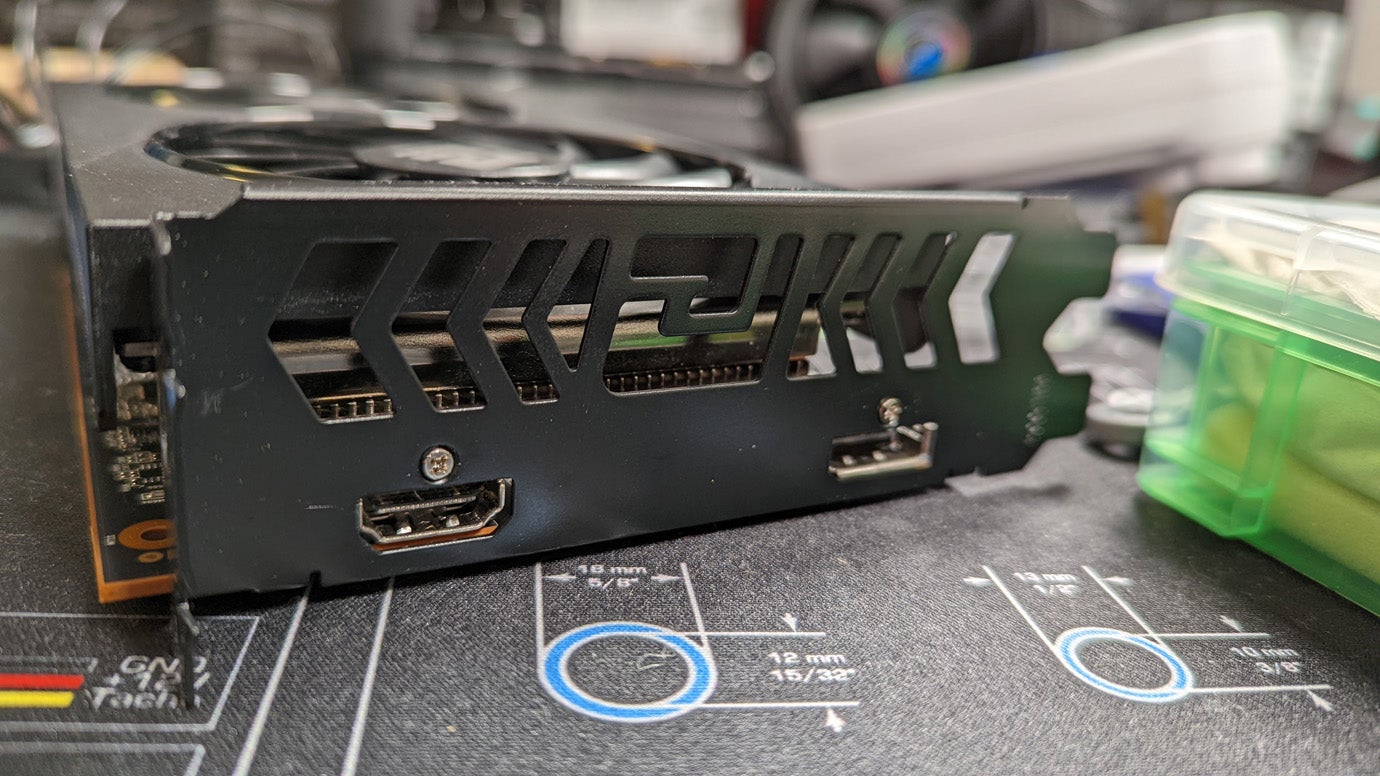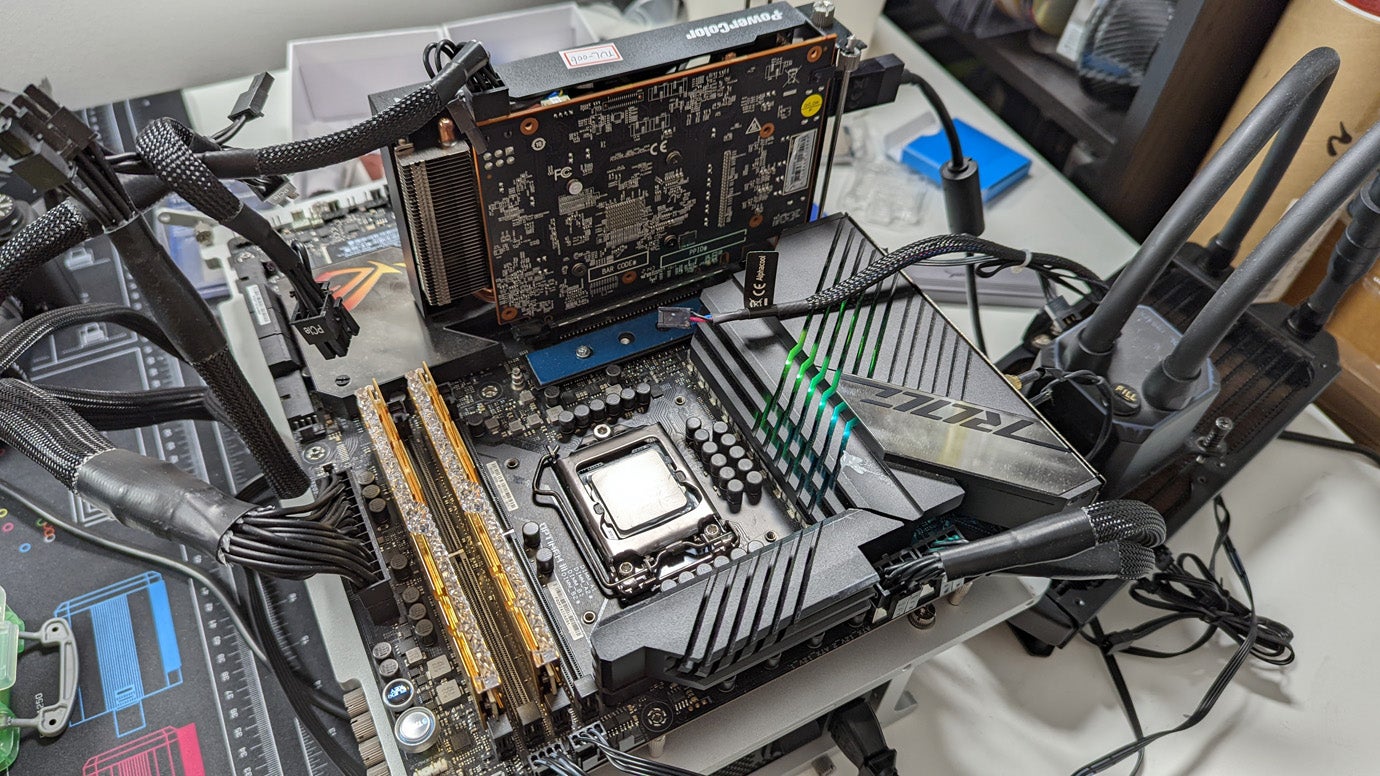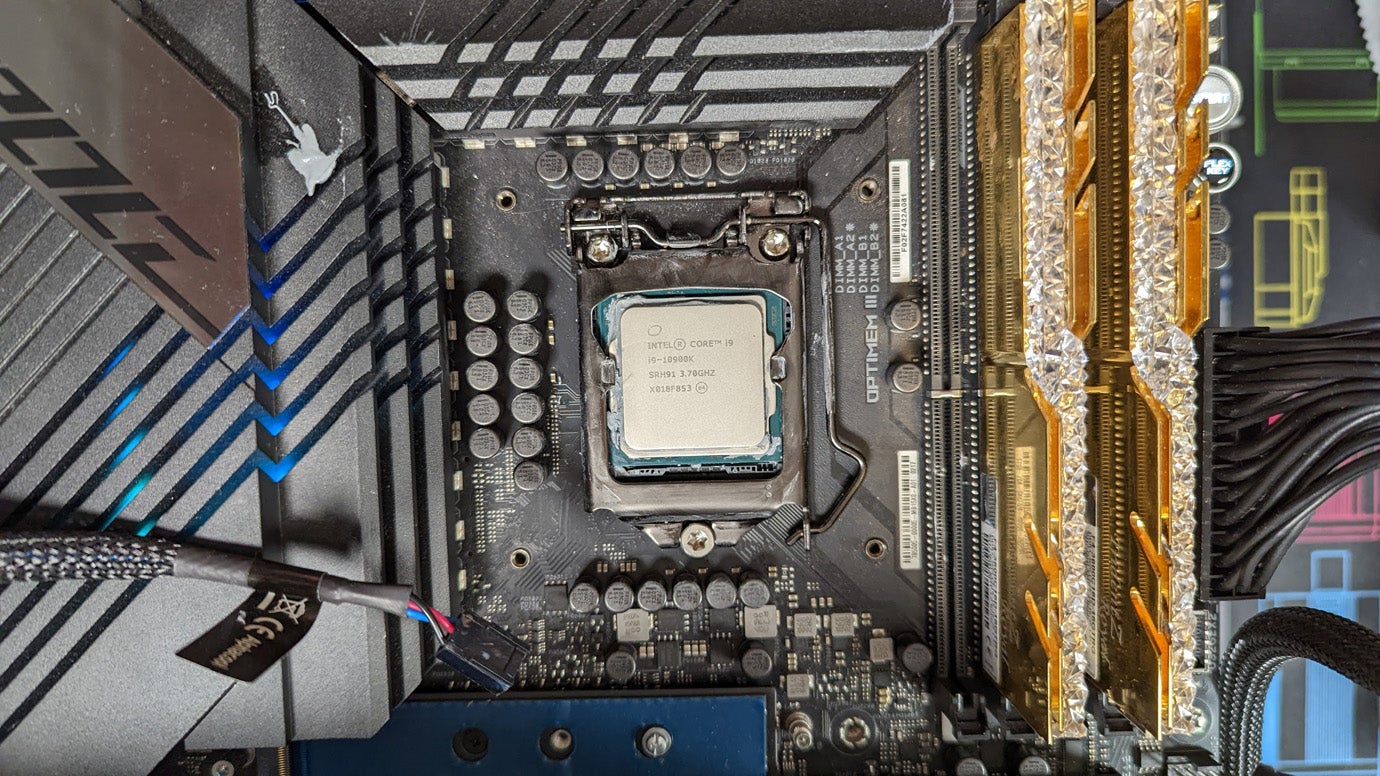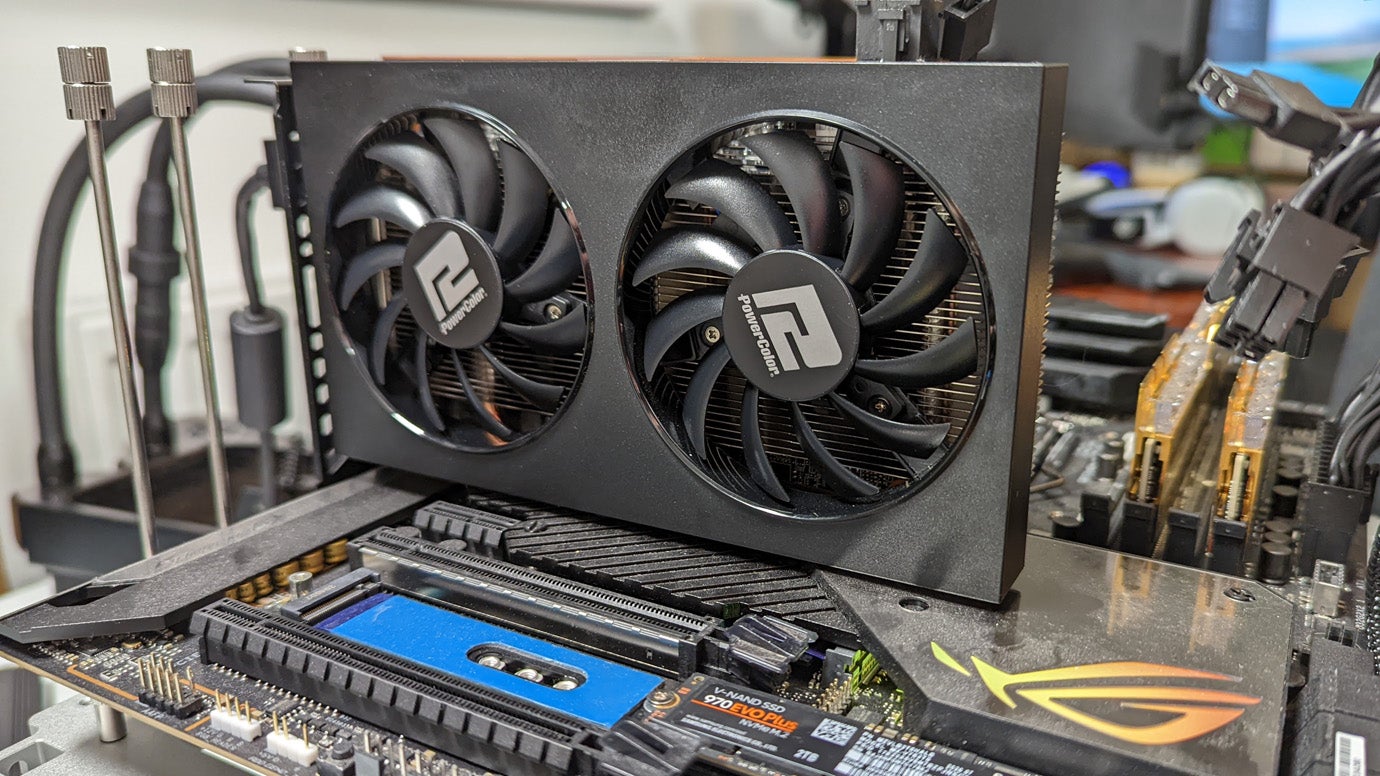One potential reason for this shaky performance is that AMD has opted to include just four PCIe lanes with the RX 6500 XT, compared to the more usual eight or 16. That makes sense with modern PCIe 4.0, where each lane can deliver an impressive amount of bandwidth, but what happens when you use the 6500 XT on a PCIe 3.0 system where bandwidth per lane is halved?
That’s what many potential purchasers of the RX 6500 XT will experience, and it’s also what we’ve tested - as our standardised GPU test bed is one such PCIe 3.0 system. We also performed like-for-like PCIe 3.0 vs 4.0 testing, to see exactly how much performance is being left on the table.
Our GPU testing includes comparisons to the lower echelons of AMD and Nvidia’s current-gen lineups, as well as a classic card of yesteryear: the RX 580 8GB. This GPU debuted at $249 back in 2018, then dropped below $200 before The Great Upmarking, putting it in much the same weight class as the 6500 XT.
There’s plenty to discuss, so let’s get into it - starting with a quick look at the card and its specs so we can get a better idea of what we’re dealing with here.
Interestingly, the RX 6500 XT is AMD’s first 6nm design, albeit using the same RDNA2 architecture that the rest of their RX 6000 series graphics cards. We’re not expecting a massive efficiency increase as the result of this change, but it might have contributed to the design’s very high game clock. It’s rated at 2610MHz on the spec sheet, but we regularly saw GPU core frequencies hovering around 2844MHz - impressive stuff. Power usage is also extremely low given the frequency, with boards rated for a nominal TDP of 107W, compared to 160W for the RX 6600 XT. That means this should be amongst the easiest boards to include in low-power systems, while still including features like hardware-accelerated ray tracing.
Elsewhere, the card is essentially half the spec of an RX 6600 XT. There’s half the compute - 16 compute units versus 32 - and 4GB of GDDR6 with 16MB of Infinity Cache rather than 8GB of GDDR6 with 32MB of Infinity Cache. The memory system uses just a 64-bit bus, compared to a 128-bit bus on the RX 6600 XT. The PCIe connection has also been chopped in half, from a PCIe 4.0 x8 on the 6600 and 6600 XT to just PCIe 4.0 x4 on the 6500 XT, which has performance implications as we noted above.
Our particular review unit is the Powercolor Fighter, the Taiwanese company’s entry-level GPU design. It still looks and feels pretty good, with a two-slot design, twin fans and a six-pin auxiliary power input, but connectivity is restricted to just one HDMI 2.1 port and one DisplayPort 1.4 port. HDMI 2.1 is great for connecting to a modern TV or monitor, allowing 4K 120Hz with 10-bit HDR over a single cable, but it’s disappointing to see just two ports here when many RX 570 and RX 580 models boasted DVI-D, HDMI and DisplayPort.
Inside, AMD’s RX 6500 design is missing a few media features available on the RX 6600 and up - there’s no AV1 decode and no H.264/H.265 hardware video encoder. The former is annoying as AV1 is a future-looking, data-efficient way to stream video from sites like Netflix and YouTube, while the latter is even more galling as it means you’ll need to rely on software encoding to record gameplay or stream to Twitch.
Our test rig has remained the same as it was for our RX 6600 and 6600 XT reviews. We use a Core i9 10900K system as this provided the best out-and-out gaming performance when current-gen GPUs launched back in 2020, backed with an Asus Maximus 13 Hero Z590 motherboard, dual-channel G.Skill Trident-Z Royal DDR4-3600 CL16 memory and a 2TB Samsung 970 Evo Plus NVMe drive from Box. To keep our CPU performance constant, we’ve locked it to 5GHz on all cores and kept it cool with a 240mm Eisbaer Aurora liquid cooler. Everything is powered by a reliable 1000W Corsair RM1000x PSU, supplied by Infinite Computing.
Now that you’re familiar with the premise, the hardware and our testing apparatus, let’s get onto the results!
AMD Radeon RX 6500 XT analysis
Introduction and hardware analysis [This Page] Doom Eternal, Control, Borderlands 3, Shadow of the Tomb Raider - Game Benchmarks Part 1 Death Stranding, Far Cry 5, Hitman 2, Assassin’s Creed Odyssey - Game Benchmarks Part 2 Metro Exodus, Dirt Rally 2, Assassin’s Creed Unity - Game Benchmarks Part 3 Control, Metro Exodus, Battlefield 5 - RT game benchmarks PCIe 3.0 vs PCIe 4.0 - How does bandwidth affect frame-rate? AMD Radeon RX 6500 XT - the Digital Foundry verdict





